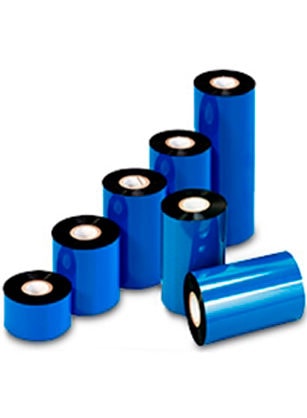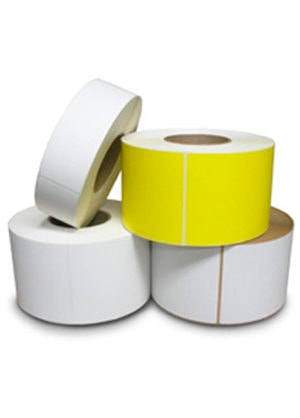What is Thermal Transfer Printing?
Leave a CommentThermal transfer printing involves melting resin-based ink or wax ribbons onto printing media, which results in a high-quality, long-lasting image. Manufacturers primarily use thermal transfer printing to print labels due to its resistance to moisture and heat that allows for optimal durability. Depending on the needs of a particular application, this process could be more ideal than direct thermal printing or other printing processes.
How Does a Thermal Transfer Printer Work?
The thermal transfer printing process relies on heat to produce results. Specifically, thermal transfer printing entails generating heat using the elements contained within the thermal printhead. This heat causes thermal transfer ribbon (TTR) ink to melt, transferring it onto the print media to develop the designated image.
Thermal transfer printers work efficiently through the use of sensors that indicate to the system when the TTR roll is out, which helps preserve the printhead. The resulting image features a high print quality that’s capable of withstanding more wear and tear compared to other printed images.
Unlike direct thermal printers, thermal transfer printers work with many types of print media, such as polyester, paper, and polypropylene.
Thermal Transfer Printer Advantages
Thermal printing alone offers numerous benefits compared to other types of printing techniques. Generally, thermal printing offers increased media and application flexibility along with reduced maintenance and increased durability. Because of these benefits, applications often use thermal printing methods to print barcodes, particularly those used on tags and labels that experience levels of exposure to moisture, sunlight, and other harsh conditions.
While both direct thermal and thermal transfer printing each offer similar benefits, thermal transfer printing comes with several key advantages, including:
- Long-life image stability
- The ability to produce crisp and high-definition graphics, text, and barcodes
- Reliability
- Minimal waste production
- Low maintenance costs
- A wide range of available print media options
Limitations of Thermal Transfer Printing
While thermal transfer printing offers a variety of advantages that make it ideal for many applications, it also comes with certain disadvantages compared to direct thermal printing and other methods. These limitations aren’t necessarily bad, but you should keep them in mind when considering this process:
- Higher Supply Costs: Thermal transfer printers require ribbon for one-time use purposes, which results in higher supply costs compared to direct thermal printing. However, because these systems protect the thermal transfer printheads, these components last longer in thermal transfer printers.
- Poor For Recycling: The thermal transfer ribbon is difficult to recycle.
- Potentially wasteful. If an application requires minimal printing, this makes the single-pass thermal transfer ribbon more wasteful.
- Compatibility: To produce the best possible print quality, both the print media and ribbon must be compatible with each other. If these elements are incompatible, the ribbon may melt onto the label and result in waste.
- Monochrome Printing: Thermal transfer printing works best with monochrome printing applications, with little to no color applied.
High-Quality Thermal Printing Supplies from Technicode, Inc.
Thermal transfer printing is one of the most reliable printing processes available for printing labels, barcodes, and other materials. If you require some of the best thermal printing products, Technicode, Inc. is here to provide them. We supply many types of thermal transfer printing media that work with a wide variety of thermal printers, including printers from brands such as Datamax®, Zebra®, Monarch®, and many others. Our supplies include a selection of thermal transfer ribbons, thermal transfer labels and tags, and much more based on your thermal transfer printing needs. We also offer supplies for direct thermal printing applications.
Regardless of what you need, we have some of the best products in the industry to provide consistently great results. To learn more about our product offerings and what we can do for you, contact us today.






